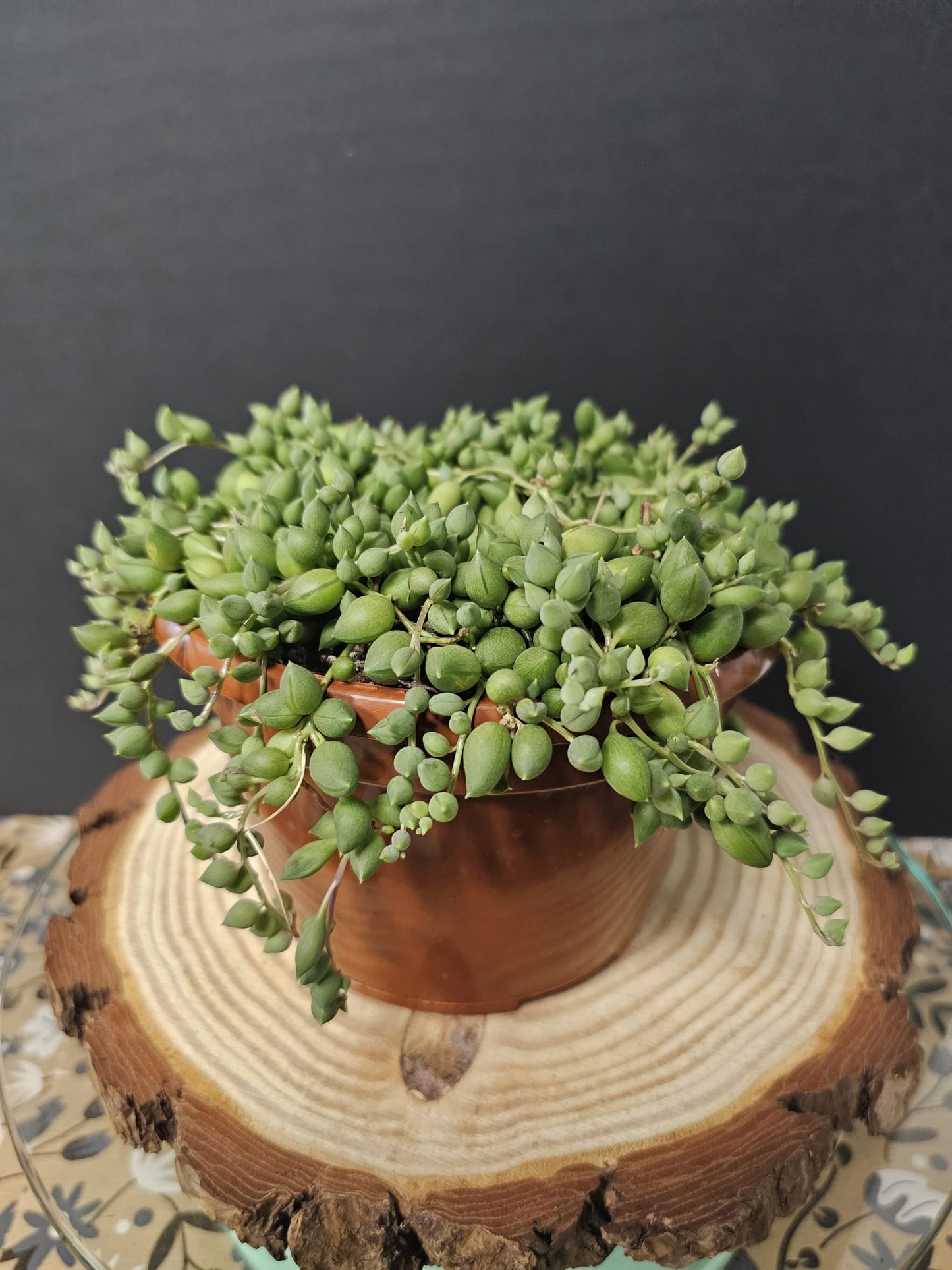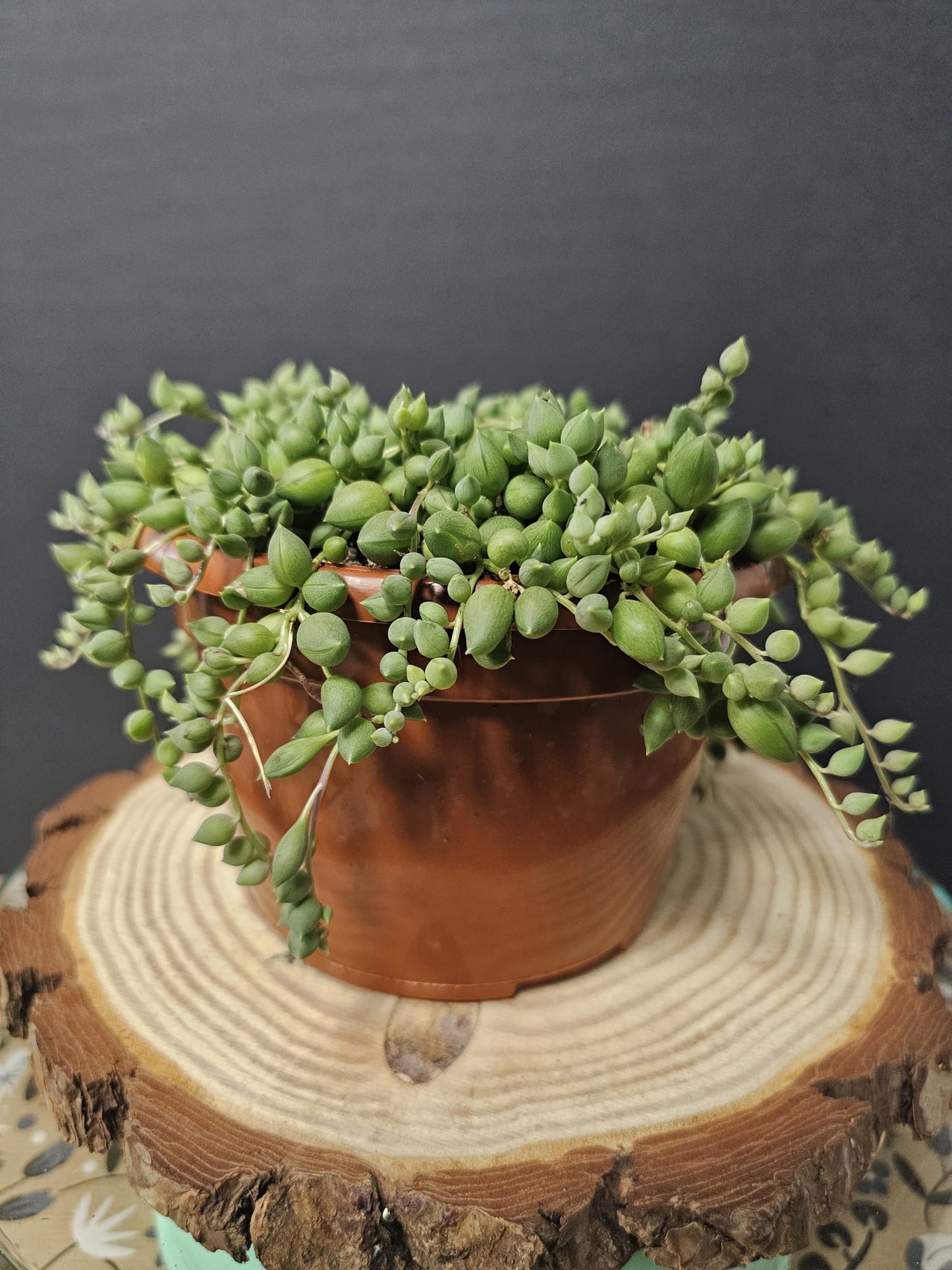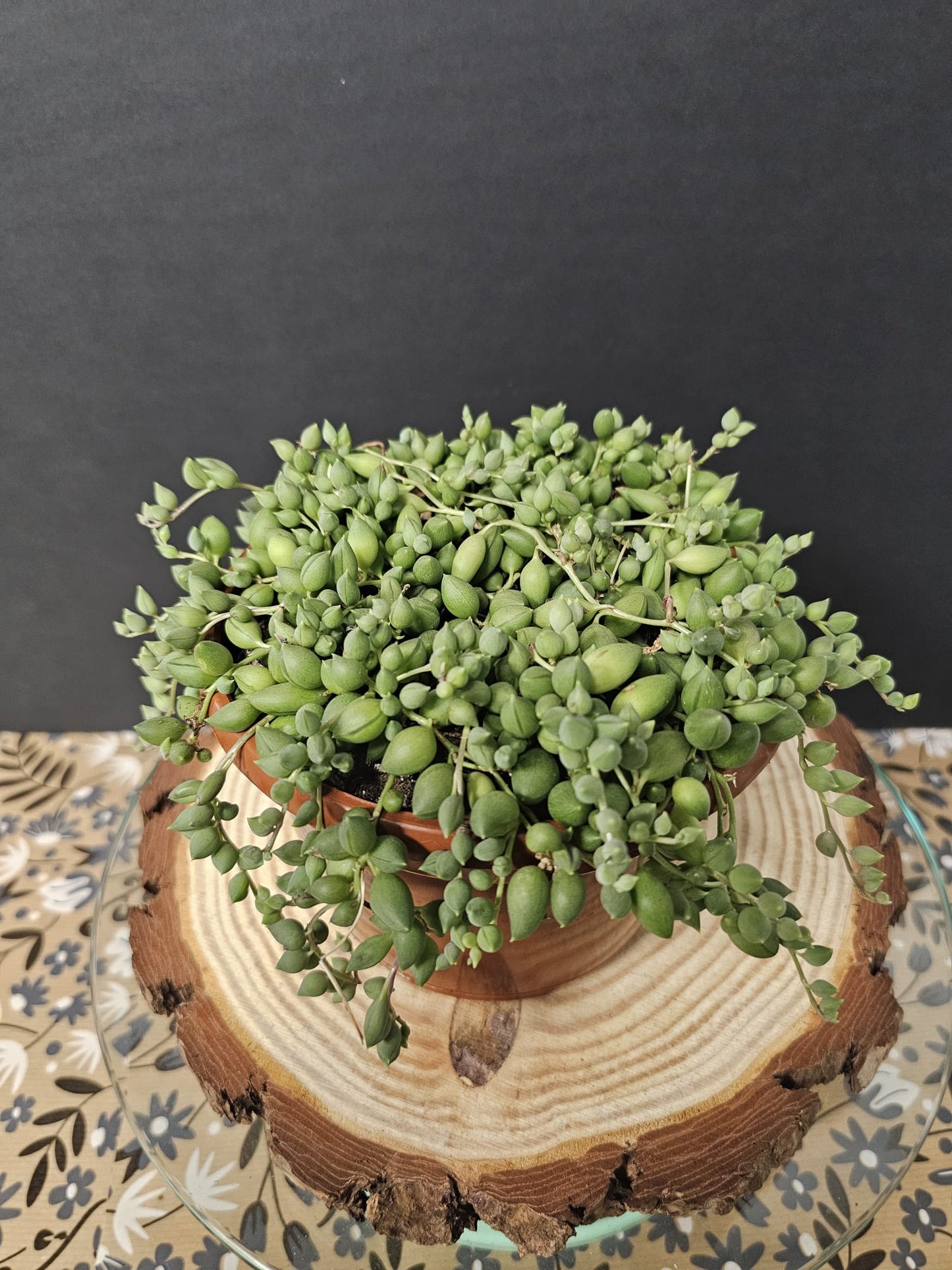Plant Paradise By Gemma
String Of Pearls - Senecio rowleyanus | Houseplants
String Of Pearls - Senecio rowleyanus | Houseplants
Couldn't load pickup availability
String Of Pearls
The string of pearls is a striking, trailing succulent known for its cascading strands of round, bead-like leaves that resemble a string of pearls. Native to South Africa, it thrives in bright, indirect light and well-draining soil, making it ideal for hanging baskets or as a trailing accent in mixed planters. Its drought tolerance and minimal care requirements make it a popular choice for indoor gardening, while its unique appearance adds texture and visual interest to any space. In summer, it may produce small, white, cinnamon-scented flowers, adding to its charm.
Provided in a 15cm pot
Please note: This plant is not pet safe.
Individual plants may differ slightly in shape and size from the picture shown
Care Instructions:
-
Light Conditions☀️
Place your String of Pearls in a bright spot with plenty of indirect sunlight. A south- or west-facing window is ideal, but protect it from intense midday sun, especially in summer, which can scorch the leaves.
In low light, growth will be leggy, and the pearls will be sparse.
Too much direct sun can cause sunburn, and the leaves may turn yellow or brown.
Rotate the plant regularly to ensure all sides receive equal light and prevent it from leaning towards the light source.
-
Watering💧
Allow the soil to dry out completely between waterings. This is a key principle for watering this succulent.
Feel the top of the soil. If it feels dry, it's time to water.
Water your plant thoroughly until the water drains through the bottom.
Water less frequently during the cooler winter months when the plant is dormant.
Allow any excess water to drain away.
-
Humidity💦
As a desert plant, the String of Pearls prefers low humidity and does not require misting.
Ensure good air circulation, especially in humid or confined spaces, to prevent fungal problems.
-
Temperature🌡️
The String of Pearls prefers average room temperatures between 18–24°C during the spring and summer.
During the cooler winter months, it will tolerate temperatures down to 10°C.
Avoid cold draughts, air conditioners or heaters as this plant is sensitive to temperature fluctuations.
-
Fertilising🌱
Feed sparingly with a diluted liquid feed during the spring and summer.
Stop fertilising during the winter months.
-
Additional Care➕
Prune to maintain the desired shape and size, and to remove any leggy or damaged growth.
You can then use the pruned section to make more plants.
Repot every 2–3 years or when the plant becomes rootbound.
Always repot in Spring.
Share






